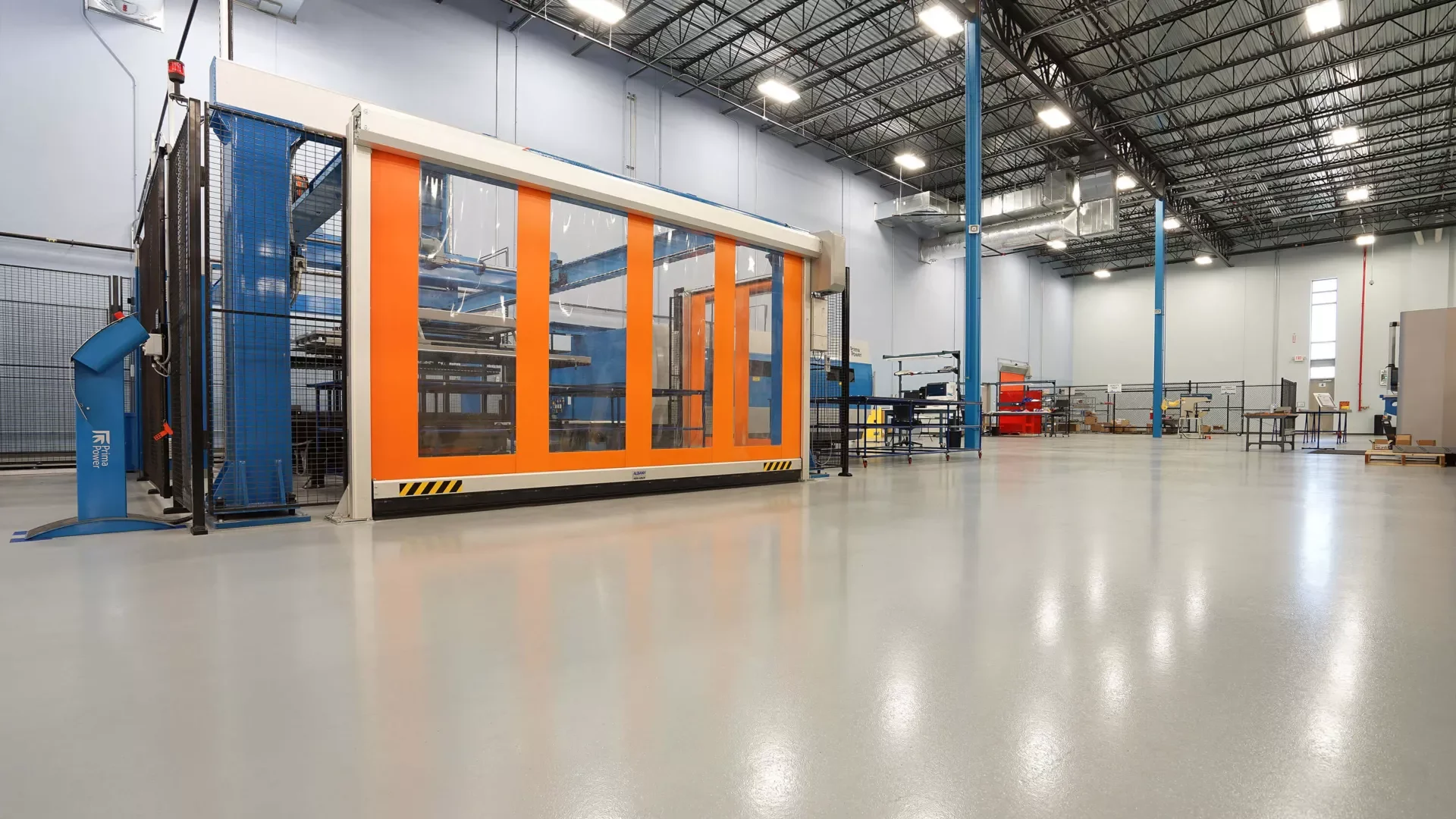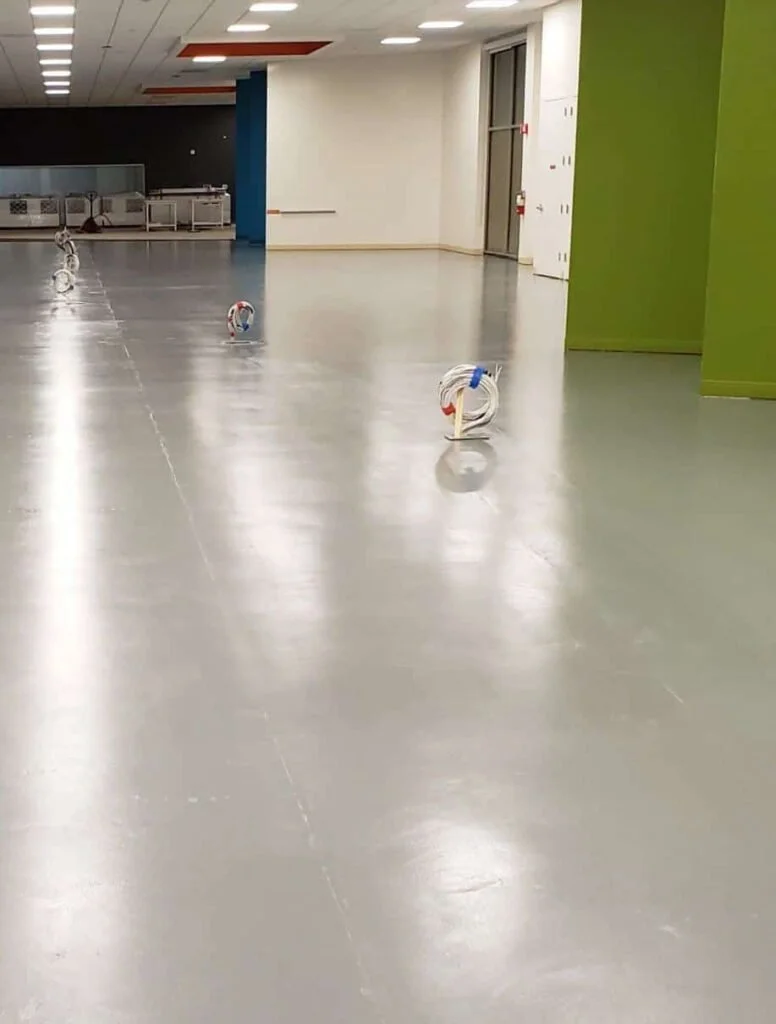
Control Static. Protect What Matters.
ESD flooring systems are designed to safely dissipate static electricity, protecting sensitive electronics, equipment, and environments from costly damage or failure. Seamless, durable, and compliant — ideal for static-critical operations.
What is a ESD System?
Electrostatic dissipative (ESD) flooring systems protect sensitive equipment, components, and environments by safely controlling the buildup and discharge of static electricity. Designed for critical applications, ESD floors combine resin-based performance with engineered conductivity — offering seamless, durable, and compliant protection for static-sensitive operations.
Why chose a ESD System?
Protects Sensitive Electronics
Prevents static discharge that can damage components or disrupt operations.Compliance You Can Trust
Meets ANSI/ESD S20.20, ASTM F150, and other industry standards.Permanent Static Control
Built-in conductivity maintains performance for the life of the system with proper grounding.Seamless & Durable
Resin-based system resists wear, chemicals, and heavy traffic.Clean Room & Lab Ready
Nonporous and easy to sanitize — perfect for controlled environments.Custom Resistance Levels
Systems can be tuned for static-dissipative or conductive performance based on your needs.
Best Applications
ESD flooring systems are ideal for environments where static discharge could damage sensitive electronics, disrupt production, or pose safety risks.
Industrial
Electronics manufacturing and assembly lines
Semiconductor and microchip facilities
Aerospace and avionics production areas
Robotics and automation labs
Server rooms and data centers
Clean rooms and pharmaceutical plants
Explosive or flammable handling zones
Medical device manufacturing
PCB testing areas
Automotive electronics and EV battery lines
Our Process (How We Install ESD Systems)
1. Mechanical Surface Preparation
The concrete is mechanically ground or shot blasted to CSP 2–3, removing contaminants, laitance, and any existing coatings. This ensures proper mechanical bonding of the system. All edges, wall transitions, and hard-to-reach areas are hand-detailed and vacuumed clean.
2. Crack and Substrate Repair
All visible cracks, divots, and control joints are repaired using epoxy patching compounds or polyurea fillers. This step ensures a smooth, level substrate and helps prevent telegraphing through the final finish.
3. Grounding Integration
Copper grounding strips are installed directly onto the concrete and embedded into the conductive primer or body coat. These strips are connected to a verified earth ground in the facility to provide a direct path for static discharge.
4. Conductive Primer Application
A carbon-loaded or graphite-filled conductive epoxy primer is applied across the entire floor area. This layer serves as the electrical base layer, distributing static discharge evenly across the floor system.
5. ESD Body Coat Installation
A static-dissipative epoxy or urethane body coat is applied at the specified thickness (typically 20–30 mils). This layer includes carbon or conductive additives and determines the resistance range of the system.
7. System Testing and Certification
After full cure, the floor is tested using an ohmmeter or megohmmeter per ANSI/ESD and ASTM guidelines. We verify surface resistance and point-to-ground resistance to ensure the floor performs within spec (usually 1×10⁶ to 1×10⁹ ohms for dissipative systems).
6. ESD Topcoat (If Required)
For high-durability environments, a conductive or static-dissipative topcoat may be applied. This enhances chemical resistance, wear, cleanability, and helps fine-tune the system's electrical properties.

Precision Floors for Static-Sensitive Environments
In electronics, pharma, aerospace, and data environments, uncontrolled static isn’t just a nuisance — it’s a liability. Our ESD flooring systems are engineered to eliminate that risk with permanent, code-compliant static control and industrial-grade durability.
Protect your products, your equipment, and your operation — from the ground up.

